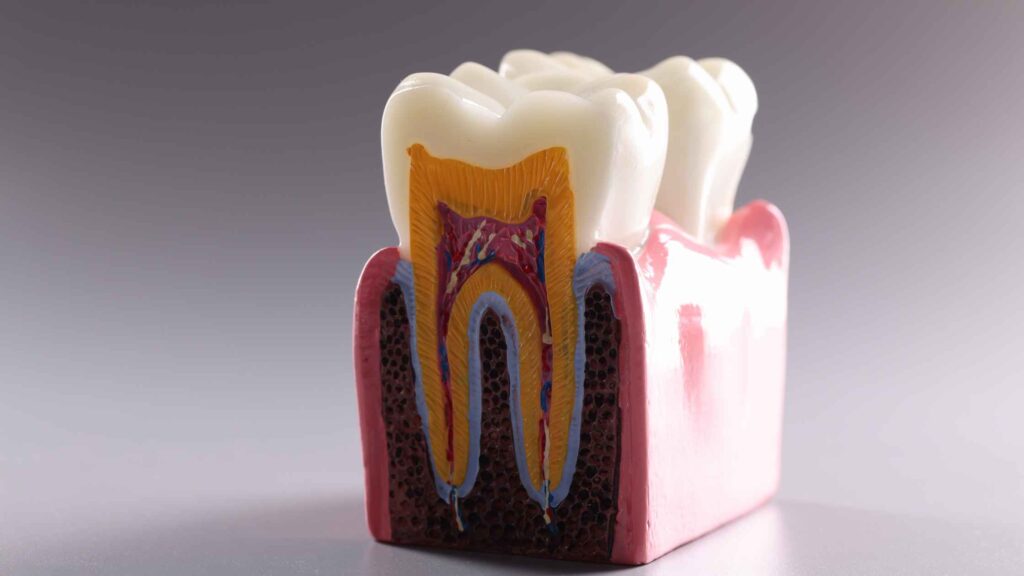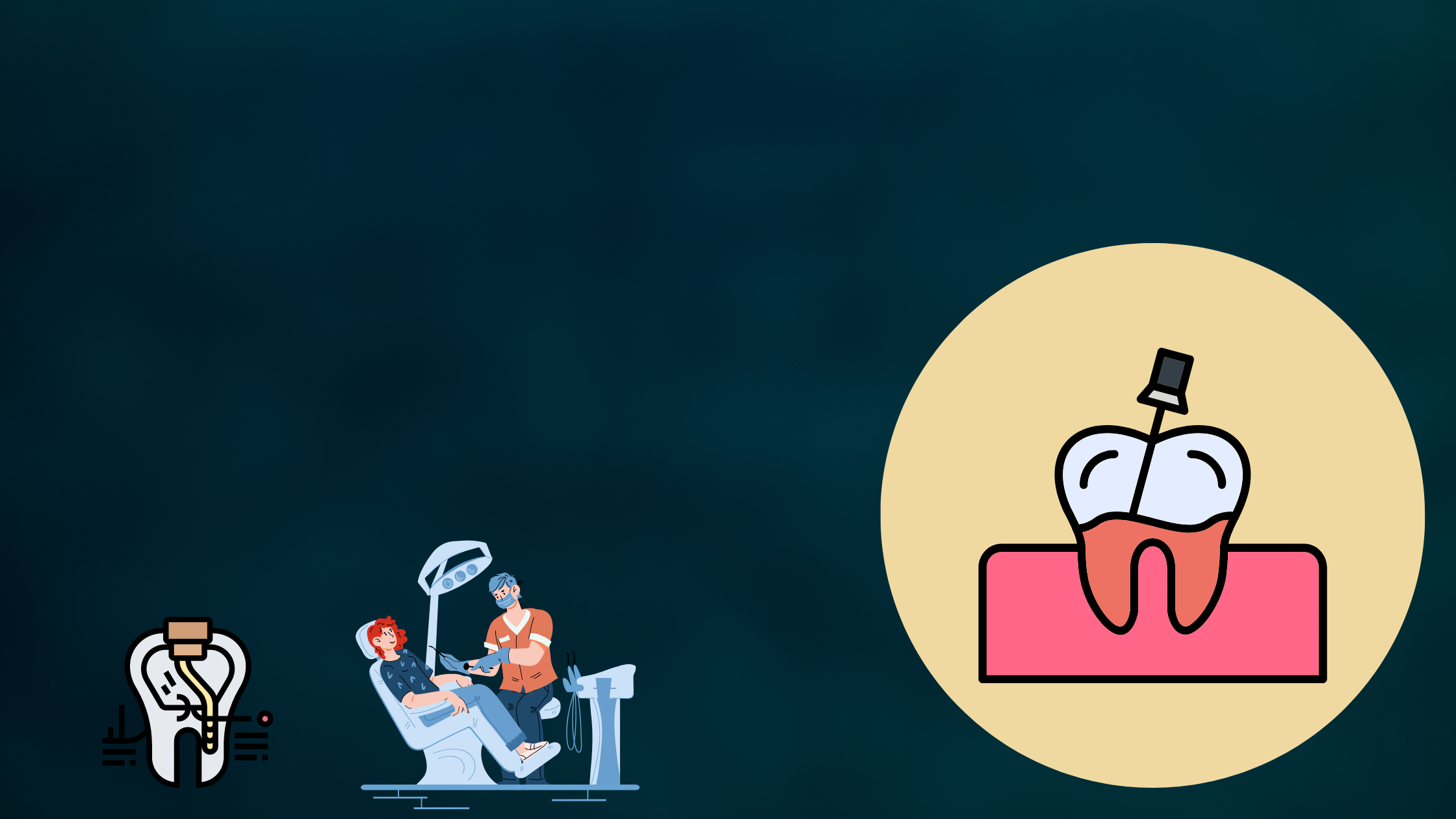Your smile is an important aspect of your overall appearance and self-confidence, but it’s easy to take your dental health for granted until a problem arises. One of the most common dental issues is a damaged or infected tooth. In the past, this meant that the tooth would need to be extracted, but with modern dentistry, there is an alternative solution: root canal treatment. Despite its reputation, root canal treatment is a highly effective and minimally invasive procedure that can save your natural tooth and restore your dental health. In this blog, we will delve into the details of root canal treatment, explore the myths and misconceptions surrounding it, and help you understand how this procedure can help you keep your smile healthy and beautiful.
What is Root Canal Treatment?
Root canal treatment is a dental procedure that is performed to save a damaged or infected tooth. The procedure involves removing the infected or inflamed pulp from the inside of the tooth and then filling the space with a special material to prevent further infection.
The pulp of a tooth is the soft tissue inside the tooth that contains nerves, blood vessels, and connective tissue. When the pulp becomes infected or inflamed, it can cause severe pain, sensitivity to hot or cold, and even lead to the formation of an abscess.
During a root canal procedure, the dentist will first numb the area around the affected tooth. Then, they will create an opening in the top of the tooth to access the pulp. Using small instruments, the dentist will carefully remove the infected or inflamed pulp, clean and shape the root canals, and fill them with a rubber-like material called gutta-percha. Finally, a filling or crown will be placed on top of the tooth to protect and strengthen it.
Root canal treatment is often considered a last resort to save a damaged tooth, as it is a complex and time-consuming procedure. However, it can be highly effective at relieving pain and preserving the natural tooth, avoiding the need for more invasive procedures such as extraction or dental implants.
I. Understanding the Anatomy of the Tooth

A. Layers of the Tooth
The tooth is a complex structure composed of different layers, each with a specific function. The layers of the tooth include:
- Enamel: This is the outermost layer of the tooth, which is the hardest and most mineralized tissue in the human body. Enamel is a translucent layer that covers the crown of the tooth and protects the underlying dentin.
- Dentin: This layer is located beneath the enamel and comprises the majority of the tooth structure. Dentin is softer than enamel and contains tiny tubes that connect the inner pulp of the tooth to the surface.
- Pulp: This is the innermost layer of the tooth, which contains blood vessels, nerves, and connective tissues. The pulp is responsible for nourishing the tooth and transmitting sensations such as temperature and pain.
- Cementum: This layer covers the roots of the tooth and attaches it to the jawbone through tiny fibers called periodontal ligaments.
Understanding the anatomy of the tooth is important for maintaining good oral health, preventing dental problems, and seeking appropriate treatment if any issues arise.
B. The Root Canal System
The root canal system is the space inside the root of a tooth that contains the pulp, which is made up of nerves and blood vessels. The pulp is vital to the tooth’s health, but if it becomes infected or damaged, it can cause severe pain and lead to the loss of the tooth. To treat this, a root canal procedure may be performed, in which the infected or damaged pulp is removed and the root canal system is cleaned, shaped, and filled with a special material to seal it. This helps to preserve the tooth’s structure and prevent further damage or infection.
C. Causes of Damage To The Root Canal
Causes of damage to the root canal can include tooth decay, trauma to the tooth, and gum disease. When the pulp becomes infected or inflamed, it can lead to a root canal infection. This can cause pain, swelling, and other symptoms. To treat a root canal infection, a dentist may perform a root canal procedure, which involves removing the infected pulp and filling the canal with a special material. In severe cases, the tooth may need to be extracted.
II. Signs and Symptoms of Root Canal Problems
A. Pain and Sensitivity: A root canal problem may cause pain and sensitivity in the affected tooth. The pain may be constant or intermittent and can range from mild to severe. Sensitivity may occur when eating hot or cold foods, or when pressure is applied to the tooth.
B. Swelling and Tenderness: Swelling and tenderness in the gums around the affected tooth may be a sign of a root canal problem. The area may feel tender to the touch and may be visibly swollen.
C. Discoloration and Decay: Discoloration of the affected tooth, usually a darkening or graying, can be a sign of a root canal problem. Decay may also be present in the affected tooth.
D. Changes in Bite: A root canal problem may cause changes in the way the teeth fit together when biting or chewing. This can result in discomfort or difficulty when eating
III. The Root Canal Treatment Procedure

Root canal treatment is a dental procedure that is performed when the pulp inside a tooth becomes infected or inflamed. The procedure involves removing the infected or damaged pulp, cleaning and shaping the root canal, and then filling and sealing the canal. The following is a step-by-step explanation of the root canal treatment procedure:
A. Diagnosis and Assessment:
The first step in root canal treatment is to diagnose the problem. The dentist will examine the tooth and take an X-ray to determine the extent of the damage. The dentist will then determine if root canal treatment is necessary.
B. Anesthesia and Numbing: Before the procedure, the dentist will administer local anesthesia to numb the area around the affected tooth. This will help to minimize any discomfort during the procedure.
C. Cleaning and Shaping The Root Canal: The dentist will make an opening in the tooth to access the pulp inside. The pulp will then be removed, and the inside of the root canal will be cleaned and shaped using specialized instruments. This will help to remove any remaining bacteria and prepare the canal for filling.
D. Filling and Sealing The Canal: After the canal has been cleaned and shaped, it will be filled with a material called gutta-percha. This will help to seal the canal and prevent any bacteria from entering. The opening in the tooth will then be sealed with a temporary filling.
E. Restoration of The Tooth: In most cases, a root canal treated tooth will need a dental crown or filling to restore its function and appearance. The dentist will discuss the best option for restoration with the patient and proceed accordingly.
Overall, root canal treatment is a safe and effective way to save a tooth that would otherwise need to be extracted. With proper care, a root canal treated tooth can last for many years.
IV. Aftercare and Recovery
A. Pain Management: After the procedure, you may experience some discomfort or sensitivity in the treated tooth. Your dentist will provide you with pain management instructions and may prescribe pain medication if needed.
B. Oral Hygiene and Care: It is important to practice good oral hygiene after a root canal treatment. Brush and floss regularly, and avoid eating hard or crunchy foods that could damage the treated tooth.
C. Follow-Up Appointments: You will need to schedule a follow-up appointment with your dentist to check on the healing progress and ensure that the tooth is healthy. Your dentist may take an x-ray to confirm that the infection has cleared.
D. Post-Treatment Recommendations: After a root canal treatment, your dentist may recommend a crown or other dental restoration to protect the tooth and restore its function. You should also continue to visit your dentist regularly for checkups and cleanings to maintain good oral health.
V. Benefits of Root Canal Treatment
A. Preserving Natural Teeth: Root canal treatment can help preserve your natural teeth, which is important for maintaining a healthy and attractive smile. By removing the damaged or infected pulp, the tooth can be saved and continue to function properly.
B. Preventing Further Damage and Infection: If left untreated, an infected or damaged tooth can lead to further damage and infection, potentially requiring more invasive procedures or even tooth extraction. Root canal treatment helps prevent this from happening by removing the source of the problem.
C. Avoiding More Expensive and Invasive Procedures: Root canal treatment is often less expensive and less invasive than other dental procedures, such as tooth extraction or dental implants. By addressing the problem early on, you can avoid the need for more extensive and costly procedures down the line.
D. Improving Overall Dental Health: By removing the infection or damage, root canal treatment can help improve your overall dental health. This can reduce the risk of developing other oral health issues, such as gum disease or tooth decay, and improve your overall quality of life
VI. Myths and Misconceptions about Root Canal Treatment
A. Painful and Traumatic Procedure: This is a common myth about root canal treatment. With the advancements in modern dentistry and anesthesia, the procedure is not painful, but rather similar to getting a regular filling. The procedure is also not traumatic and is a safe way to save a damaged or infected tooth.
B. Can Cause Illness and Health Problems: Another myth is that root canal treatment can cause illness and health problems. This myth originated from poorly conducted research over a century ago, which has since been debunked. Root canal treatment is a safe and effective way to treat dental infections and does not cause any adverse health effects.
C. Not Effective and Only A Temporary Solution: Some people believe that root canal treatment is not effective and is only a temporary solution. However, root canal treatment is a long-lasting solution to save a damaged or infected tooth. It can also prevent further infection and damage to the tooth and surrounding tissues.
D. Better to Extract the Tooth: Finally, some people believe that extracting the tooth is a better option than root canal treatment. However, this is not always the case. Extracting a tooth can cause a gap in the smile, difficulty eating and speaking, and can lead to further dental problems. It is best to preserve the natural tooth whenever possible through root canal treatment.
VII. Conclusion
In conclusion, root canal treatment is a crucial dental procedure that helps to save a damaged or infected tooth. However, it is important to note that proper dental health maintenance, including regular brushing and flossing, is crucial in preventing the need for such treatments. Seeking professional help and treatment from a dental specialist is also encouraged, as it helps to address any dental issues early on and prevent them from escalating into more complex and expensive procedures. By prioritizing dental health maintenance and seeking professional help when needed, individuals can maintain healthy teeth and avoid the discomfort and inconvenience associated with dental problems.















